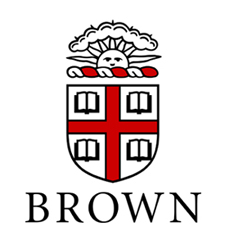Biographical note
Barnaby Conrad Keeney (1914-1980), twelfth president of Brown University, was born in Halfway, Oregon, on October 17, 1914. His father was a metallurgical engineer, and the family moved to Denver and then to Hartford. After graduation from Hartford High School, Keeney went to the University of North Carolina where he participated in track, majored in history, and graduated at the top of his class in 1936. He went on to Harvard, where he earned his master's degree in 1937 and his Ph.D. in 1939 and taught until 1941. Immediately after the attack on Pearl Harbor, he enlisted in the Army and served with the 35th Infantry as an officer in charge of an intelligence interpreters team. He was awarded the Bronze Star, the Purple Heart, and the Silver Star, and was discharged as a captain. After the war he studied for a year in Europe with a John Simon Guggenheim Post Service Fellowship, then came to Brown in 1946 as assistant professor of history. He became Dean of the Graduate School in 1949, when he was only 34, and in 1951 he was promoted to full professor. He took a leave of absence in 1951 to work for the Central Intelligence Agency. He returned to the deanship of the Graduate School and in 1952 added the position of Acting Dean of the College to his duties. In 1953 he became Dean of the College, and two years later was chosen to succeed Henry Wriston as president of Brown. The next ten years were times of building and expansion. Two large properties were acquired. The Mount Hope property in Bristol with its Haffenreffer Museum of the American Indian brought anthropology into the curriculum. The purchase of the Dexter Asylum provided thirty-nine acres for construction of athletic facilities. New buildings were added: the West Quadrangle in 1957, Hunter Laboratory for psychology in 1958, the Computing Laboratory in 1961, Prince Engineering Laboratory in 1962, the J. Walter Wilson Biology Laboratory in 1962; Meehan Auditorium in 1961; the John D. Rockefeller, Jr. Library in 1963, the Barus and Holley Building in 1963, and on the Pembroke Campus, two dormitory complexes, Champlin and Morriss Halls and Emery and Woolley Halls. Manning Hall was renovated to provide a new chapel and Hope College was renovated and reopened as a dormitory for seventy-eight students.
During Keeney's administration enrollment increased from about 3,600 to over 4,600. The biggest growth was in the Graduate School, which had about 400 students when Keeney became president and over 1,100 during his final year. The size of the faculty grew from 496 to 911, and more than $82 million was raised, including two challenge grants from the Ford Foundation which totaled $12.5 million. When Keeney announced his plans for resignation, James K. Sunshine wrote in the Providence Evening Bulletin:
"The years that Barnaby C. Keeney ran Brown University – and he ran everything about it from top to bottom – were an explosion in higher education. In a dozen different ways the University hurled itself upwards and outwards: more students and better students, more faculty and better faculty, more buildings and better buildings, new programs, new ideas, new money, and more money.
"Certainly nothing like it had happened before, not even under the master planner, Henry M. Wriston. While no one knows the future, it is hard to visualize anything quite like it happening again very soon. Not even the fact that the years were boom times for all of higher education, not merely Brown, can explain away the magnitude of the change. After all, Brown had failed to change before."
President Wriston offered this tribute on Keeney's resignation:
"His scholarship was profound in a field of study not popular because it lays such heavy burdens upon its devotees. His war service was not only distinguished but courageous to a degree few attain. It has left its impress upon his character, outlook, and physique. His teaching was fresh, original, and stimulating. In successive administration positions before becoming President, he was cast in no mold, followed his own methods, and achieved remarkable results."
One of Keeney's concerns was the amount of money and equipment available for the sciences and the lack of federal support for the humanities. After leaving Brown, he was named by President Lyndon Johnson as the first head of the National Endowment and Council on the Humanities. In 1970 he became chief executive officer of the Consortium of Universities of Washington, D.C., and in June 1971 he became the first president of Claremont Graduate School. He retired in 1976 and came back to live in Little Compton. He died on June 18, 1980 in Providence.
In 1978 it was revealed that Keeney had worked for the Central Intelligence Agency while he was president of Brown. He admitted that he had advised the CIA in matters such as "setting up covert funding operations," adding in explanation, "I suppose nowadays it is improper to attempt to serve your country ... but then I felt I was doing what I should."
The above entry appears in Encyclopedia Brunoniana by Martha Mitchell, copyright ©1993 by the Brown University Library. It is used here by permission of the author and the University and may not be copied or further distributed without permission.


